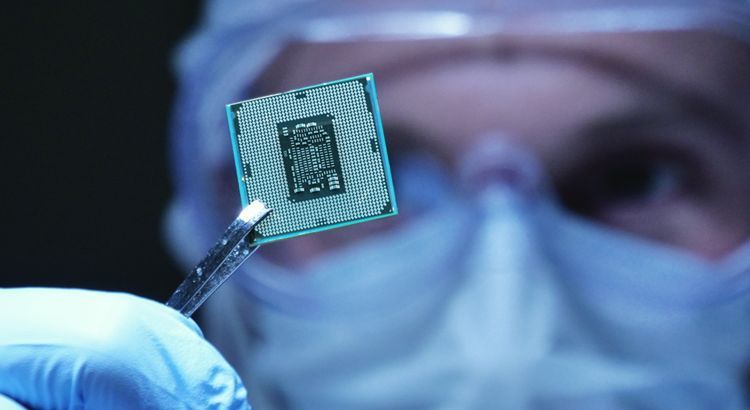
Leading the Way With Edge Processing
Mercury Systems
May 27, 2020
As technology scales, traditional AI processing in facilities away from the battlefield is no longer a solution. Listen as Tom Smelker, Vice President and General Manager of Custom Microelectronics Solutions and Advanced Microelectronics Solutions, discusses how Mercury Systems is using new 2.5D SiP technology to enable edge processing applications and answering needs for digitization closer to the sensor.
Read the transcript.
Ralph Guevarez:
Hello, and welcome to Mercury Now, a podcast series brought to you by Mercury Systems. I am your host, Ralph Guevarez, and today's topic, Leading the Way with Edge Processing, as Mercury's advancements in microelectronics provides a new approach to tough compromises when trading off between physical size and processing power.
Ralph Guevarez:
Joining me is Tom Smelker, vice-president and general manager of Custom Microelectronic Solutions and Advanced Microelectronic Solutions for Mercury Systems. Tom, good day, and thank you for joining me.
Tom Smelker:
Well, thank you for having me here, Ralph.
Ralph Guevarez:
Tom, before we discuss advancements in edge processing, can you please give our listeners a brief background on your current role at Mercury?
Tom Smelker:
Sure. I joined Mercury July of last year to start up this new business unit, Custom Microelectronic Solutions, which is very exciting, because it's all focused on 2.5D latest generation leading edge microelectronics for defense.
Ralph Guevarez:
Great, thank you. I'd like to start off by reading a quote from a soon to be released White Paper from your business unit. And I quote, "As more advanced sensors provide ever increasing collections of data, the expectations on edge processing technology increase. These processing components must not only be small and rugged enough to operate in the nose of a fighter jet or to be launched into space on a satellite, but contain the processing power to enable AI based applications such as cognitive EW."
Ralph Guevarez:
Tom, can you please tell our listeners what is edge processing and why is it relevant now?
Tom Smelker:
Edge processing is all about moving the processing capability to where the data's being collected at the sensor edge. And it's very important now because of advancements in both the sensors being able to create more information and the advancement in algorithms and our technologies like AI, that you brought up, in operating on that data. I tell people we're really not in the information age, like we like to believe. We're really in the data age.
Tom Smelker:
So today, if you look at a lot of our advanced sensors, they're creating more data than we can operate on. So we're throwing data away. Today, what we're after and what we're building are processing capabilities that will be at that sensor edge operating on that data. So we're no longer throwing that data away. We're operating on it and allowing our algorithms to be smarter and our sensors to be smarter.
Ralph Guevarez:
Let's take a step back for a minute. Can we discuss where Mercury was, say two years ago with edge processing and where we are today?
Tom Smelker:
Two years ago, it was all about size, weight, and power and how to shrink the components and pack more into a smaller form factor. Mercury's foray in this really started about four years ago, back in 2016, when we acquired the Microsemi Defense Microelectronic group. And that's really where it was focused two years ago.
Tom Smelker:
But at the same time, DARPA was investing in its electronics resurgence initiative. And the semiconductor industry was also investing in what I call the end of Moore's Law. The end of Moore's Law is not about packing more information in or more capabilities into every chip, but to put the right capabilities in a package for exactly the same reasons we are trying to do for the advanced algorithms for the smart sensors in our cars and our homes. So Mercury really started two years ago, to look at how we can bring this capability to defense.
Ralph Guevarez:
So are we revolutionizing this technology to the industry?
Tom Smelker:
Revolutionize is a perfect word for this. It's a very exciting time to be part of the semiconductor electronics, microelectronics industry. And to be part of the defense industry and that channel between the two. We are revolutionizing how radars work, the information that we can pull out of the radar to be able to put the processing right at the sensor edge, revolutionizing how EW is done and bring in true cognitive EW and the AI algorithms right to these EW sensors and transmitters.
Tom Smelker:
When it comes to comms, being able to bring the right communications to the soldier and even to the small sats up in space. And then when you look at the EOIR world, being able to put the processing right at the focal plane array and process that targeting imaging faster and to more fidelity than we've ever done before. So it's exciting because we'll be revolutionizing all the sensors that the defense industry gives us today.
Ralph Guevarez:
Now designing this type of technology can take years of research and resources. What are some of the challenges that you've faced in designing its processing technology? What's keeping you up at night?
Tom Smelker:
Yes, this is what keeps me up at night. The challenges are really about now we're moving these processors to some very rugged environments. So where electronics weren't before, we're moving those capabilities there. So we have power issues, we have thermal issues, we have shock vibe issues that we have to solve to be able to put those processors in those PGAs and so forth, where the sensors are. So, it's a unique challenge for the defense industry, but it's a fun challenge, and Mercury has the capabilities and engineering prowess to solve those types of difficult challenges.
Ralph Guevarez:
So is Mercury using the new 2.5D SiP technology? And also, how?
Tom Smelker:
Absolutely. We are using those technologies to be able to integrate the latest generation processors, GPUs and FPGAs with the latest and greatest, you know, memories, ADCs and DAX and in even defense focused microelectronics. And the exciting piece of that is it also increases a lot of the performance. It puts the SWaP, you know, size, weight, and power, for the use case exactly what the program needs. So, yes, we are investing heavily to bring that capability and use 2.5D to solve these problems.
Ralph Guevarez:
How does commercial technology play a role in edge processing? And secondly, how is Mercury making this technology profoundly more accessible to the defense industry?
Tom Smelker:
Mercury is a unique company. We're really a high tech company focused on defense. We have the channel between the semiconductor companies and the defense companies. So we're partnering with our semiconductor partners to be able to bring all that investment we were talking about in AI for the smart homes, the smart cars, and bring those technologies to the defense sensors as well. So being that channel, we're able to bring in the wafers, bring in the die from the semiconductor companies, integrate that using our 2.5D fab processes into the right form factors and create these system and packages for the defense industry.
Ralph Guevarez:
From what I understand, Mercury recently made a major investment in this technology. Can you give us an update on the facility build out?
Tom Smelker:
Last July, when I took on this endeavor, we started the build out of two cleanrooms. Those cleanrooms are complete, both the ISO 7 and ISO 8 cleanrooms, and we are facilitizing them as we speak. So all the capital equipment that makes 2.5D real is being brought up right now.
Tom Smelker:
We plan to finish that over the next couple months and start the qualification process. At the end of the year, we'll actually be starting our very first microelectronics, 2.5D microelectronics cycle through the facility. So very exciting times.
Ralph Guevarez:
Tom, if some of our listeners wanted more information on Mercury's edge processing technologies, how would they go about doing that?
Tom Smelker:
We'd love to hear from your listeners. They can reach out to us via email at custom.microelectronics@mrcy.com where they can fill out the form below. And there'll be email updates that come out giving them information on our capabilities.
Ralph Guevarez:
Thank you for joining me today. I find this technology fascinating. I wish you and the microelectronics division, the best of luck and Godspeed in leading the industry in edge processing and all of its advancements. Thank you for joining me.
Tom Smelker:
Thank you, Ralph. I enjoyed talking about this topic with you. I'm very passionate about it, and it's exciting to bring it to the defense industry.
Ralph Guevarez:
This has been another edition of Mercury Now, a podcast series brought to you by Mercury Systems. I am your host, Ralph Guevarez, signing off.






 The Mercury Processing Platform
The Mercury Processing Platform Packaged and ready to go: Mercury and our chip-level future
Packaged and ready to go: Mercury and our chip-level future